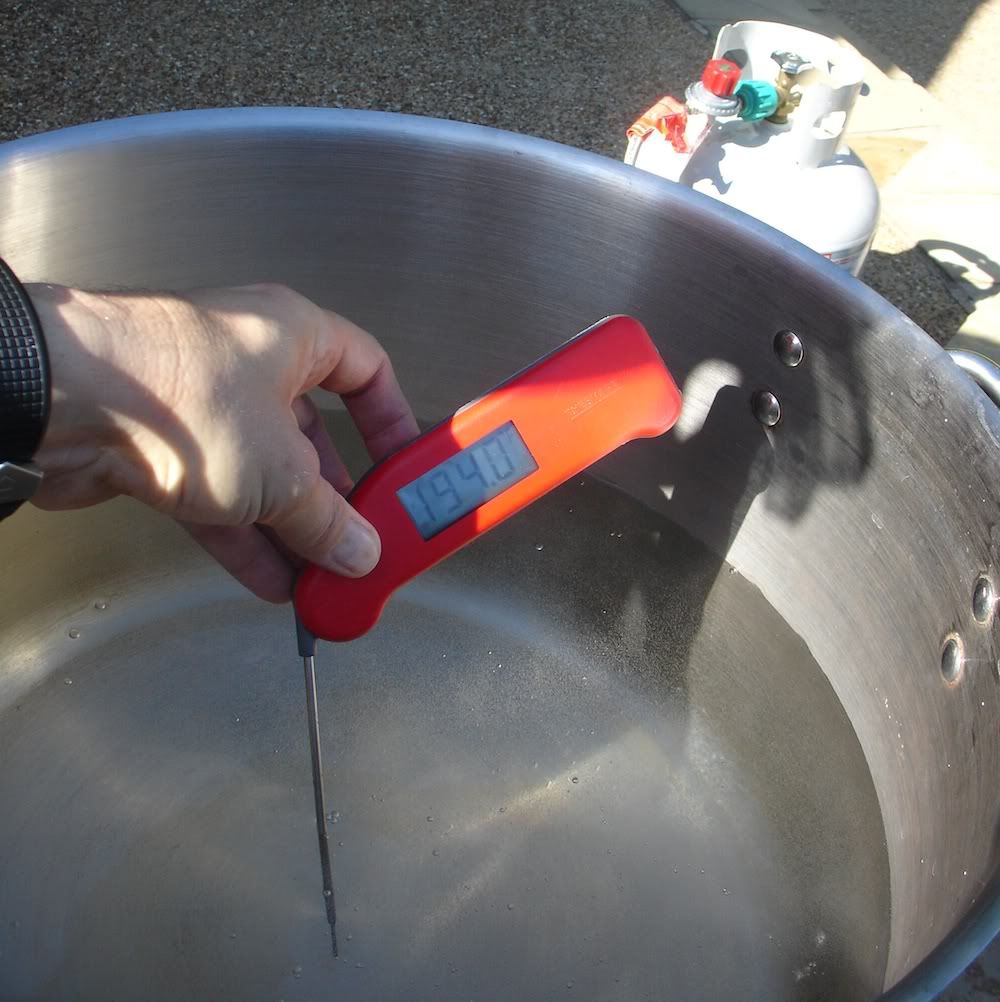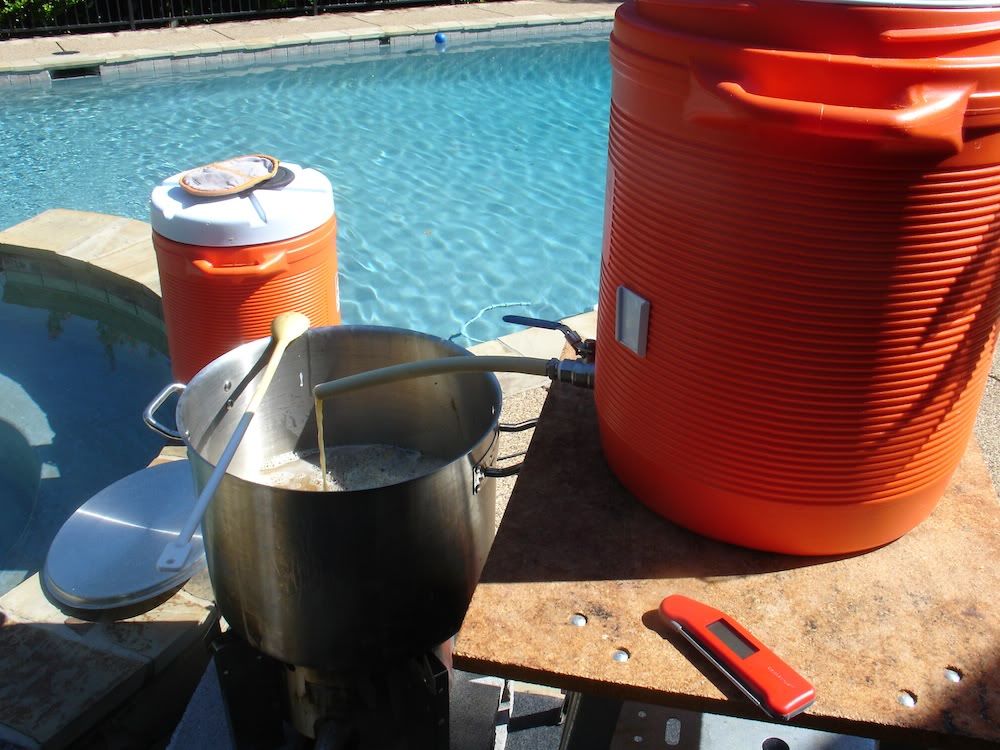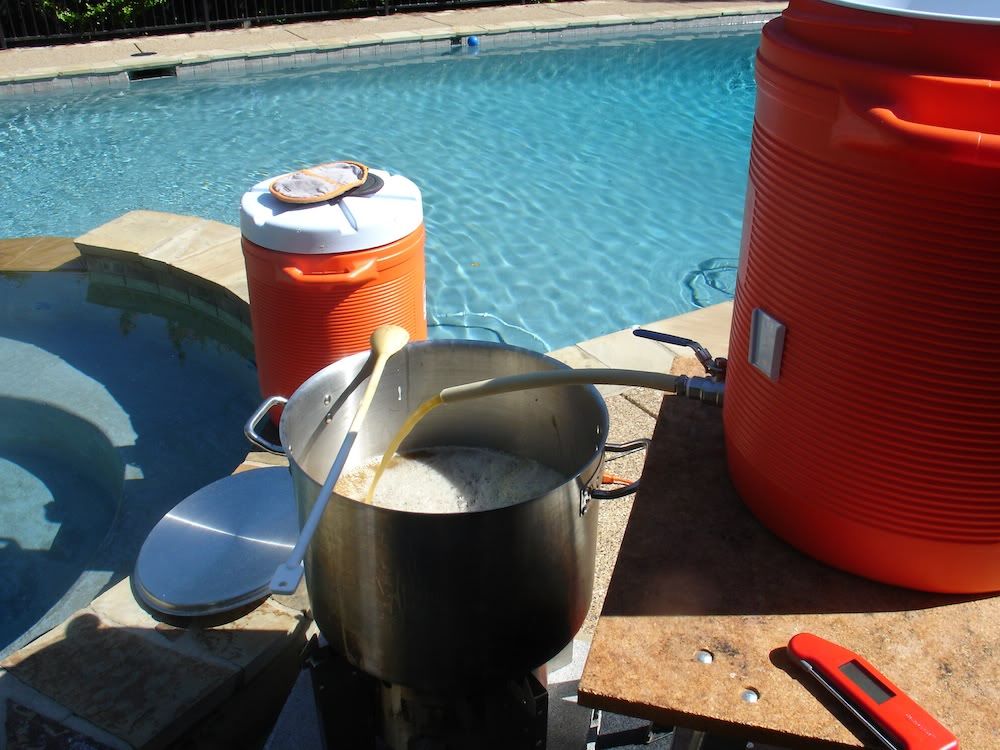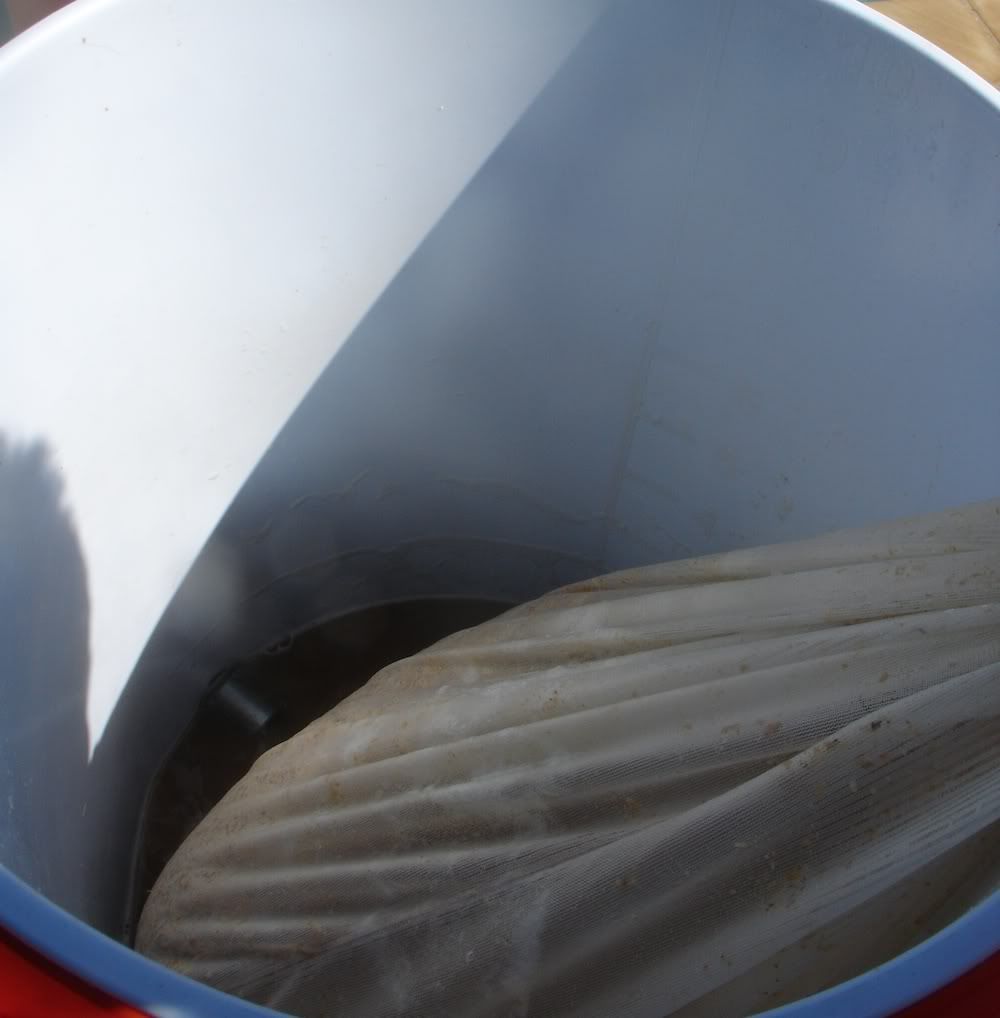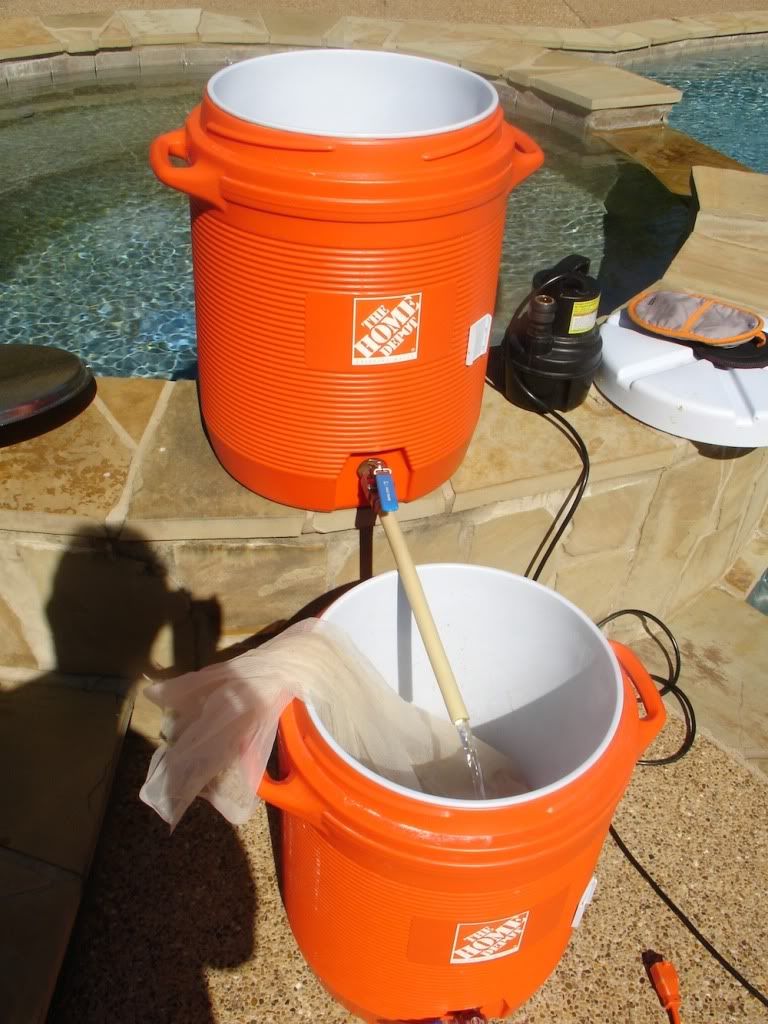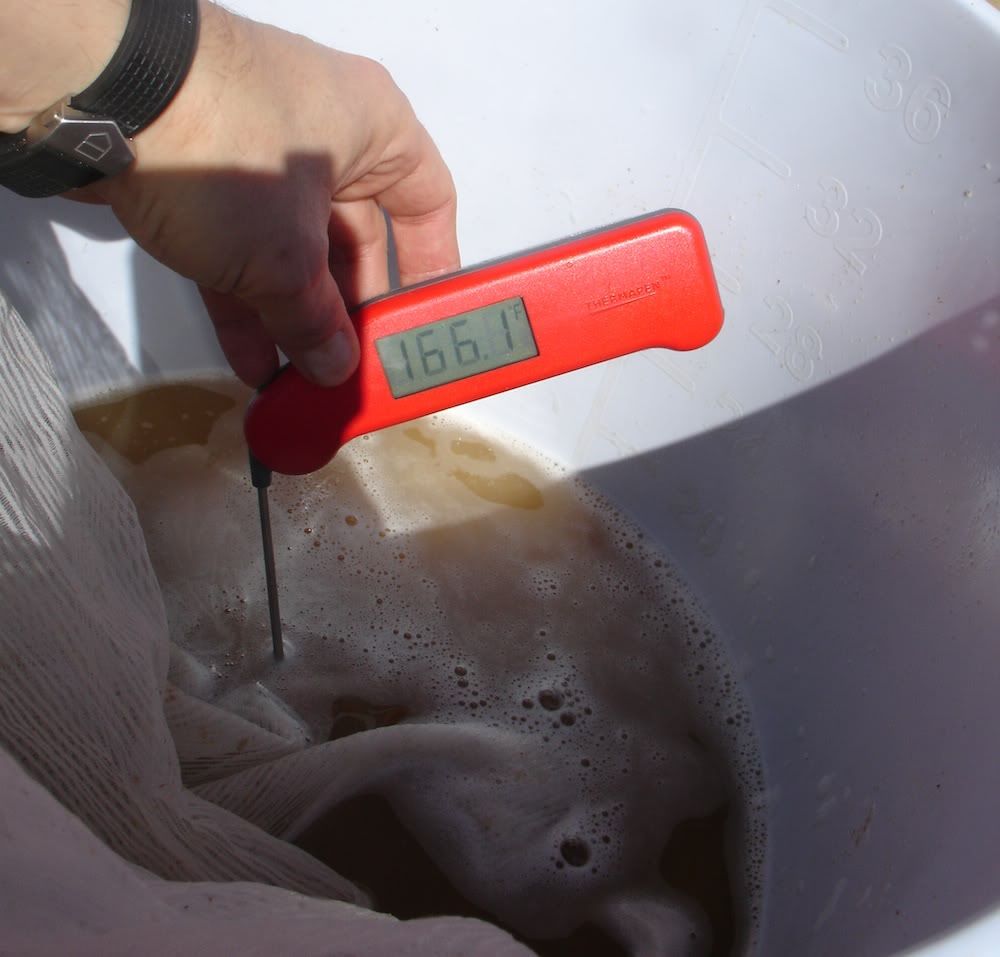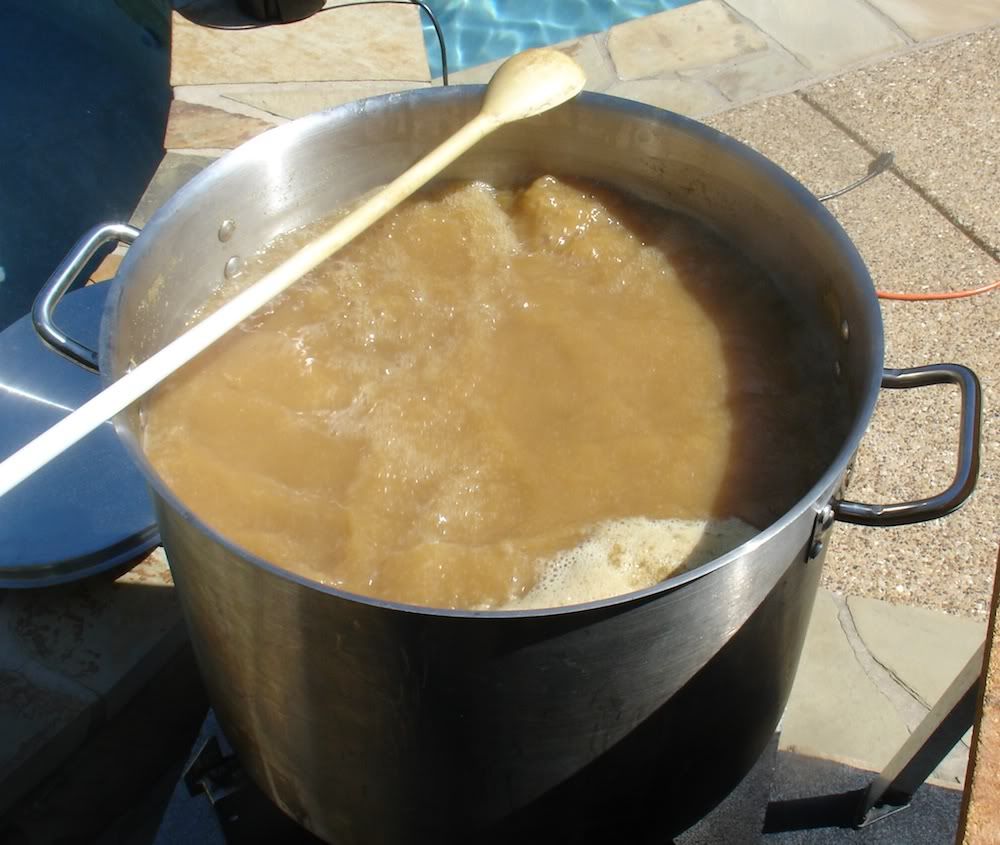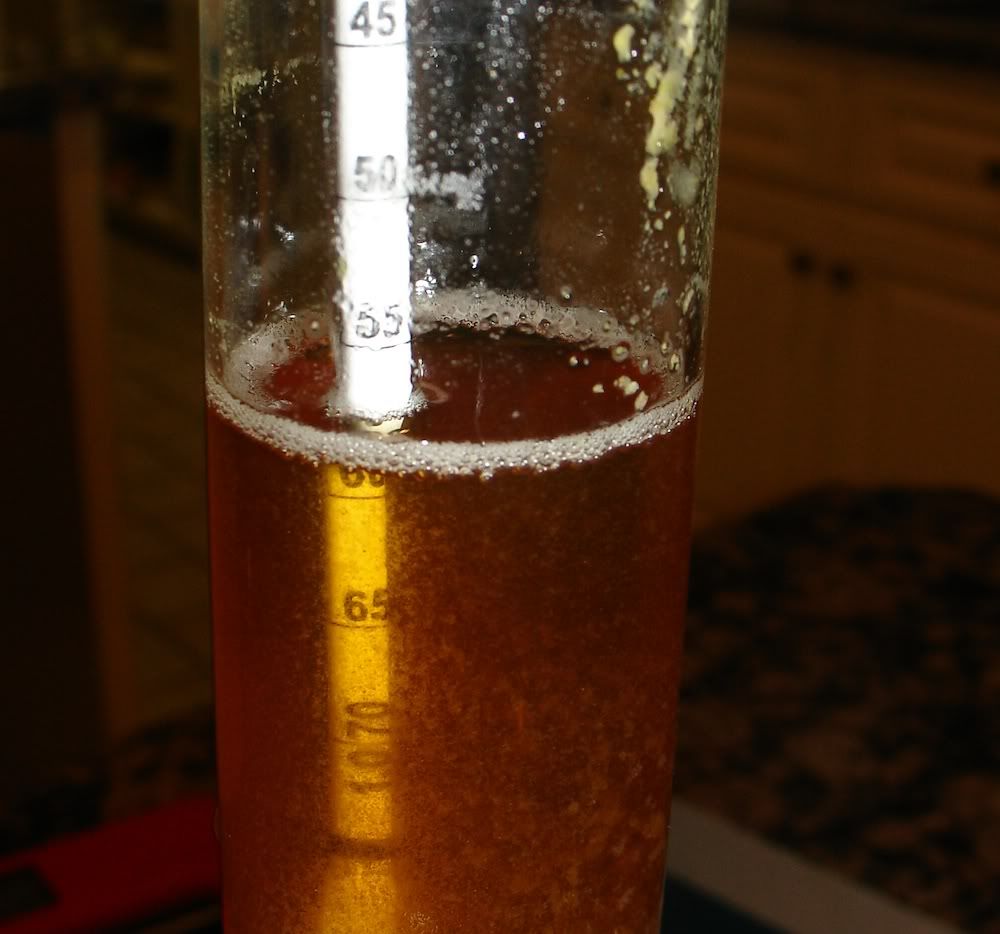- Joined
- Nov 6, 2008
- Messages
- 660
- Reaction score
- 9
Here are some pics that show how I brew. I use a combination of DeathBrewer’s stovetop AG method with Bobby_M’s double batch-sparge method.
Advantages over more traditional batch- and fly- sparge techniques include cheaper and easier equipment builds, faster sparges, and virtual elimination of stuck sparges.
The primary disadvantage is a limitation of the grain bill to around fifteen pounds (at least without some sort of mechanical method to lift the grain bag and a really big grain bag). This tends to put 10-gallon batches out of reach.
I use two 10-gallon Home Depot coolers with ball valves. You could get by with one, but two makes everything easier and quicker.
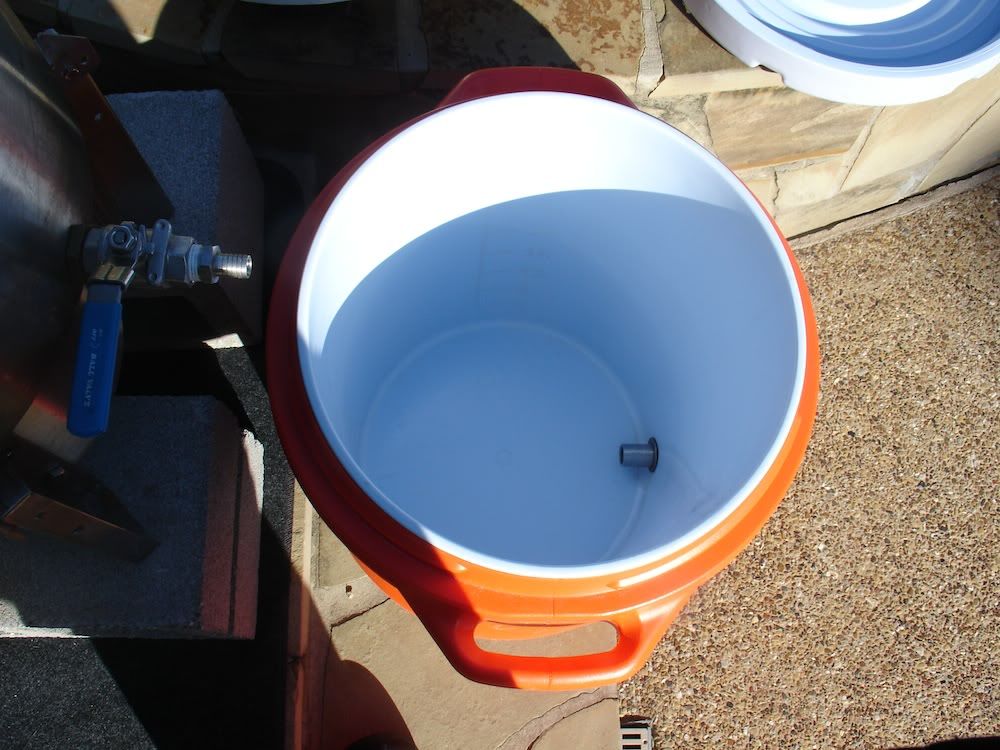
I use the large grain bags from Austin Homebrew.
Start with a fine grind directly into the bag – look at the flour:
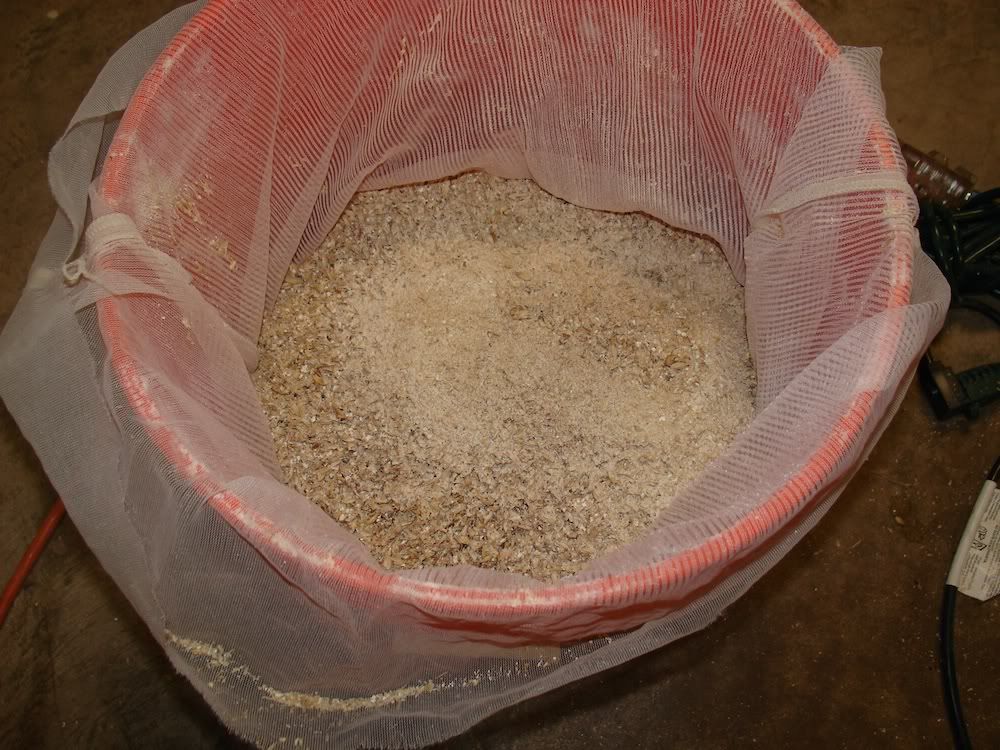
Todays recipe:
Sleeping Dog Pale Ale
12 ½ lbs. grain
5.75 gallons
1.055 O.G. at 76% efficiency (this is conservative – I’m usually around 82%)
Mash temp 154 degrees F
Strike temp 164 degrees F
Heat the strike water in the brew pot to about ten degrees higher than strike temp:
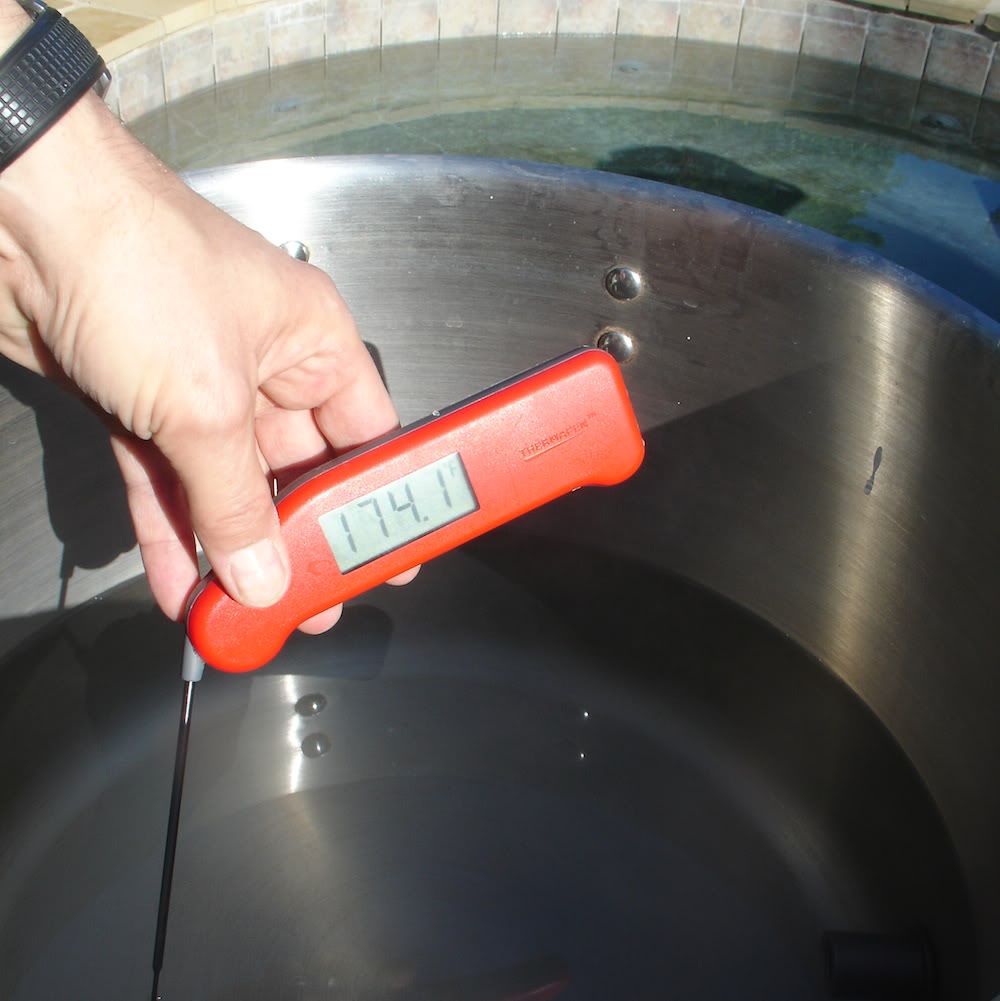
Drain into one of our coolers. Close the lid and wait ten min or so for the cooler to heat up:
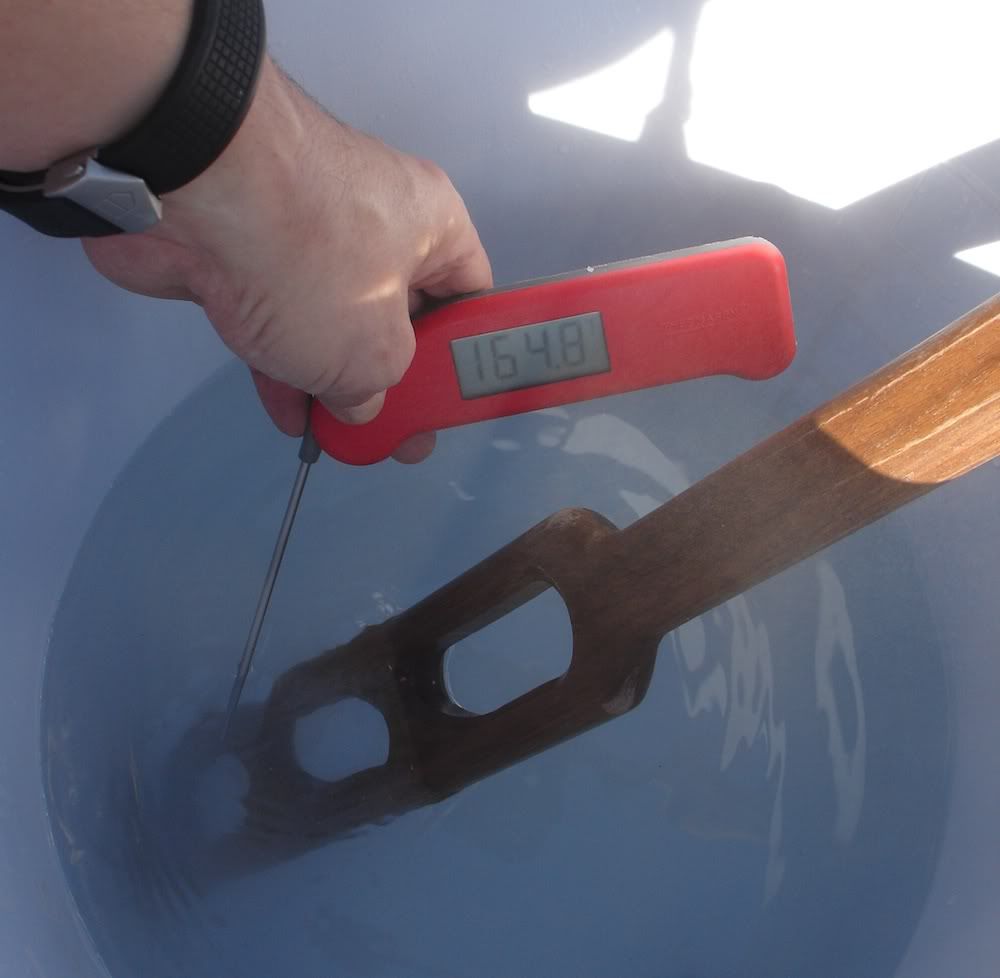
Close enough. You really want to be a degree or two high. Leave the lid off and wait for the temp to drop to the strike temp.
Time to mash. Add the bag with milled grain and stir like crazy:
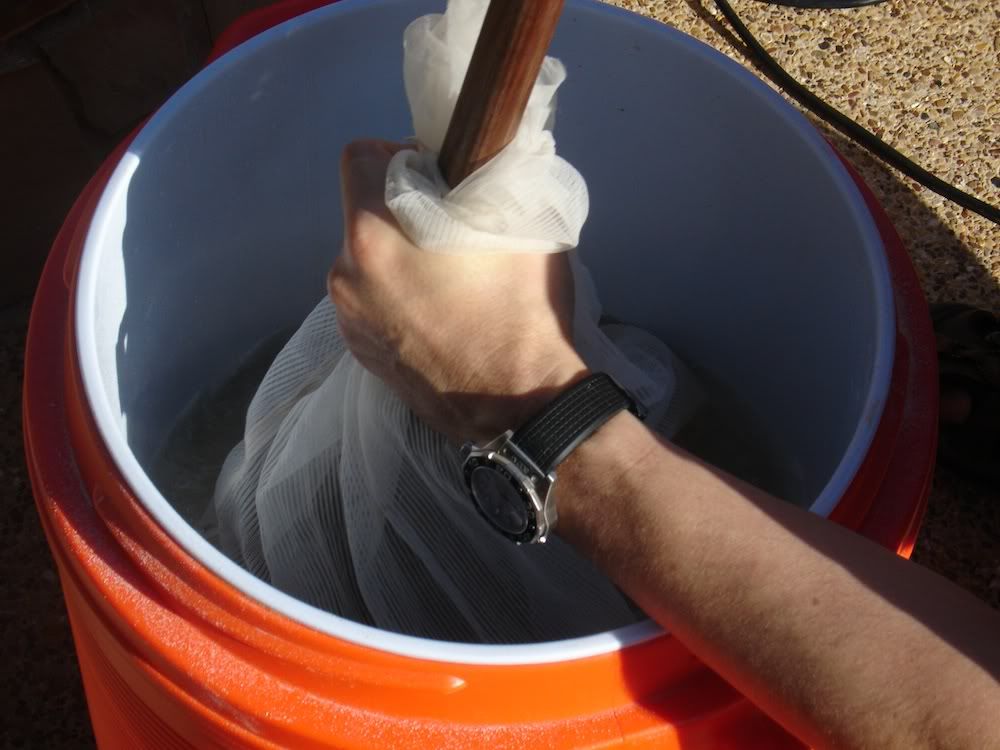
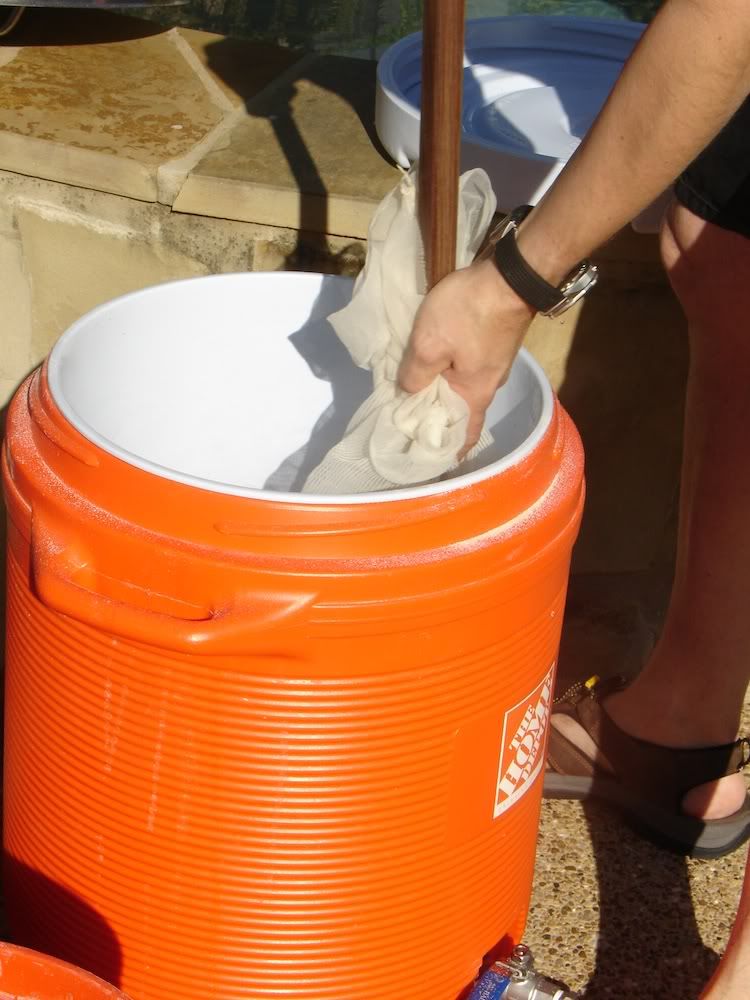

Close the lid and set the timer:
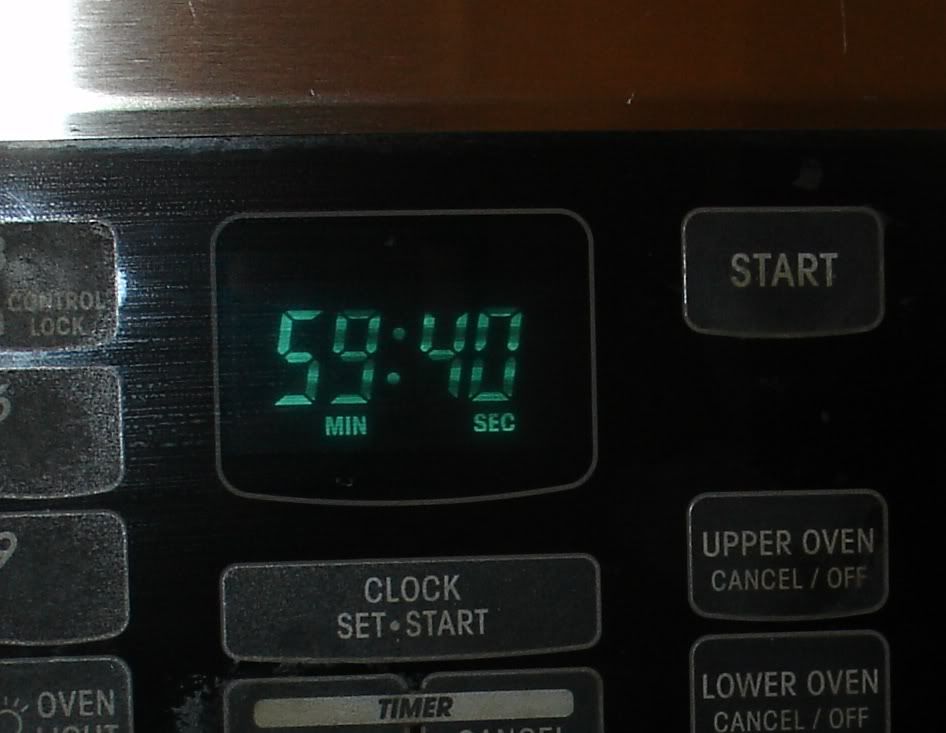
Check the temp ten minutes later:
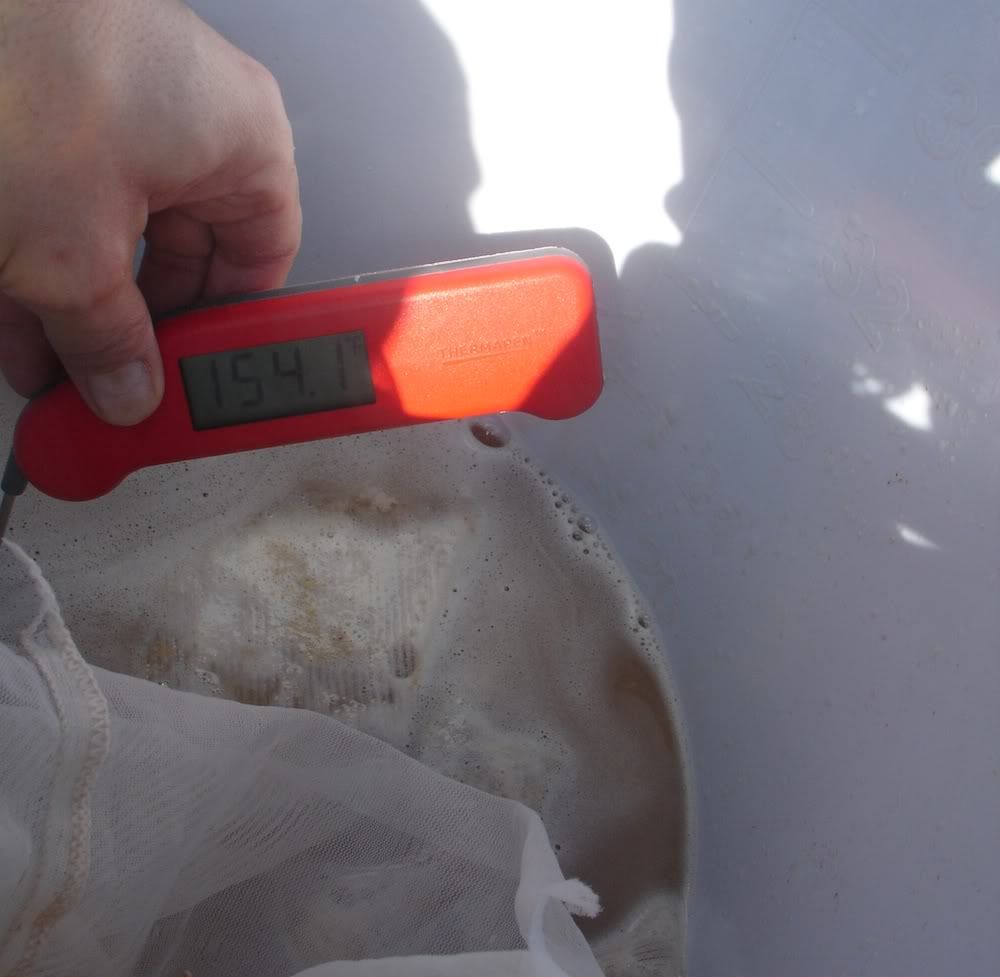
Looks good.
Advantages over more traditional batch- and fly- sparge techniques include cheaper and easier equipment builds, faster sparges, and virtual elimination of stuck sparges.
The primary disadvantage is a limitation of the grain bill to around fifteen pounds (at least without some sort of mechanical method to lift the grain bag and a really big grain bag). This tends to put 10-gallon batches out of reach.
I use two 10-gallon Home Depot coolers with ball valves. You could get by with one, but two makes everything easier and quicker.

I use the large grain bags from Austin Homebrew.
Start with a fine grind directly into the bag – look at the flour:

Todays recipe:
Sleeping Dog Pale Ale
12 ½ lbs. grain
5.75 gallons
1.055 O.G. at 76% efficiency (this is conservative – I’m usually around 82%)
Mash temp 154 degrees F
Strike temp 164 degrees F
Heat the strike water in the brew pot to about ten degrees higher than strike temp:

Drain into one of our coolers. Close the lid and wait ten min or so for the cooler to heat up:

Close enough. You really want to be a degree or two high. Leave the lid off and wait for the temp to drop to the strike temp.
Time to mash. Add the bag with milled grain and stir like crazy:



Close the lid and set the timer:

Check the temp ten minutes later:

Looks good.


